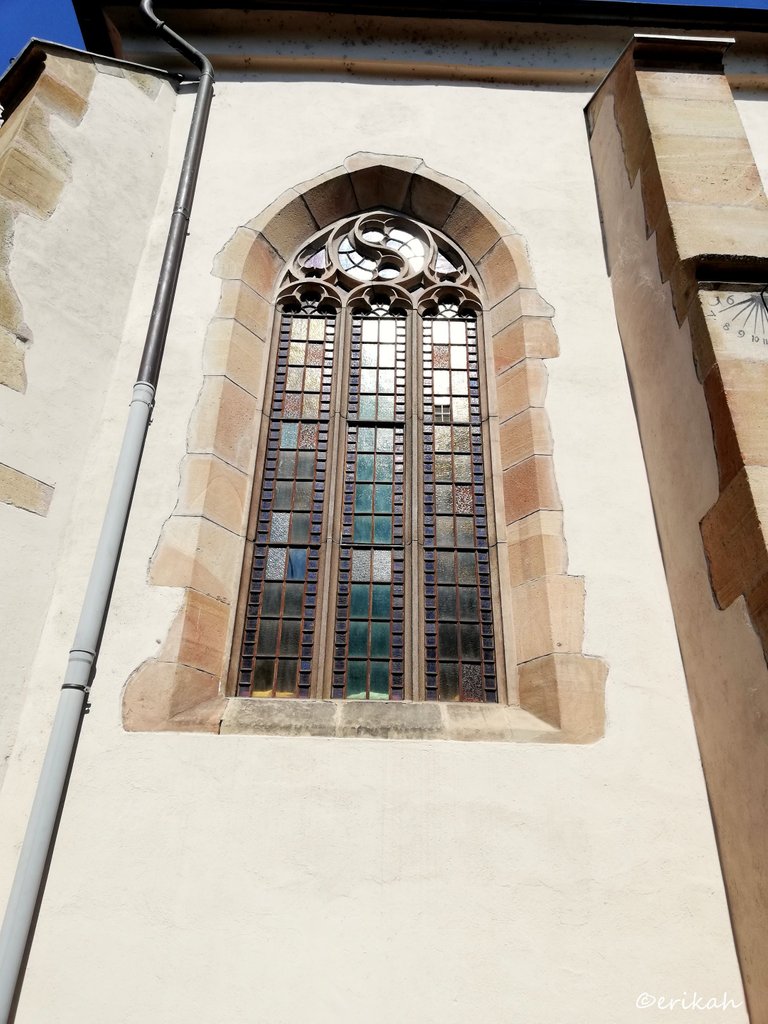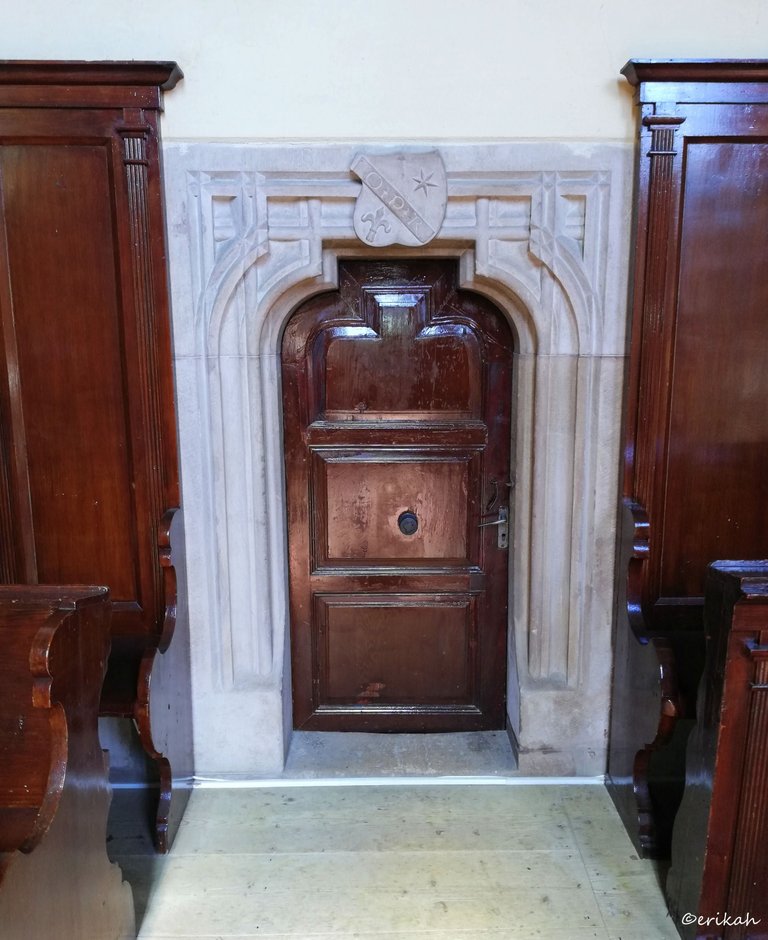Medieval Church Tour - The Lutheran Church
Even though I'm not so religious, love churches from architectural point of view. Most of them are real artworks, testimony of the past. Every time I visit a new place, city, town or village, if here's enough time, I always go to see the church(es) as well.

Not long ago, when I visited the Transylvanian city Reghin, I made sure to look up all the churches in the city and visit them all. Today I'd like to show you what beautiful churches this city has.

The Lutheran Church
Let's start with the most beautiful, most famous and the tallest one of the city, the Lutheran church, which is called the Saxon church by everyone in the region. It is also a landmark to remember in case you get lost.
The church is usually closed, but I was so lucky that day, the caretaker saw me taking photos and asked if I'd like to visit the church. My answer was a strong yes.


The church was built by the ethnic German Transylvanian Saxon community at a time when the area belonged to the Kingdom of Hungary. Initially Roman Catholic, it became Lutheran following the Reformation. source
The oldest building in the city, it was completed in 1330, as attested by a stone inscription in Latin, the earliest such carving on a medieval Transylvanian church. Valuable architectural elements include a Gothic window frame from 1400 decorated with human figures; corbels unique to the region that describe a treasure hidden inside; and the city’s first coat of arms, inscribed O.P.R. (Oppidum Privilegiatum Regun), confirming its privilege to hold fairs. source


As you see, the building has went through some renovation, but the work has been done in a way to keep the original value intact. If you look at the window on the photo above, the big bricks around it can still be visible.

The window is absolutely amazing. I'm a big fan of windows, especially church windows and this is really special.

What is even more interesting is this sundial, which did not indicate the right time at the moment of my visit but I'm not surprised as we have summer time and winter time, which the sundial was not set to know back in the day. It's sill a miracle that this sundial is still there. Not many you can find in the country.

This is the side entrance, with its arched ceiling, the original stone part is also visible here.

This is a memorial plate in memory of the Saxons who had to leave the country after 1944, with the exact numbers in Reghin and 10 nearby villages. The next column is showing the number or Saxons returned and the last one is the number of Saxons still living in the city in 2014, which is not even 10%.

Opposite to the memorial plate, there is this map with the Saxon villages of the region and their Lutheran churches.


The Museum
Inside the church, right at the main entrance, there's a small museum with a lot of genuine gems. You can see what the folk costumes looked like back in those days. There are also kitchen tools, plated and decorated, hand painted pottery. That tool you see on the right of the photo was once used to make yarn. Transylvania is a mountain region, thus sheep is very common here and the wool has been used to make everyday clothes for centuries.

More traditional clothes, the dark ones must have been for occasions. On the left, the table is full of old books, most likely written in old German.

Imagine the church full of people dressed in these clothes.



The Interior
Most of he Lutheran churches have the same architecture. The altar is in the back of the church, under a dome and above the entrance usually is an organ.

Unfortunately I could not take a photo of the church for you to see the whole building as it situates in the middle of a busy crossroad and there's no space but there was this mock-up made of wood, let's say the miniature of the church.

On the right side there's this private space, that is also used for prayers, perhaps for small groups in special occasions.

The pulpit is usually on the side, or both sides and up high so everyone can see and hear what the priest is saying. These pulpits are usually very nicely decorated. Some are made of wood, this has golden decorative ornaments.

This area is usually reserved for the church, during the mass believers are not allowed to step there, but I was a visitor and a very lucky one.




I'm not a Lutheran and therefore I'm not familiar with the religion, but I guess this is for the holy water. Checking he paper I got, it says it's for christening, donation of Johann Bertleff in 1851. In November 2, 1848, the whole church burned down, and with the church the basin with the holy water and that's why this new one was needed. Johann Bertleff also made a donation for the altar.

This is an original writing on the left wall, that dates back to 1330, testimony that the church existed in those time.
Anno Domini MCCCXXX construitur domus Marie tempore Nicolai plebani cum rebus magistri Thome patrone ecclesie.
I got a paper with the most important dated of the church history according to which the text means the following:
- This church was built in 1330 for Mary, in the time of Nicolaus parish priest, financed by mayor Thomas, who's the patron of the church.
The church was built as Roman catholic church in 1330, it becomes Lutheran church in 1551, when the congregate decided to adopt Martin Luther's teaching.

Another memorial plate, written in old German and as I don't speak German at all, I suppose it is about something that happened between 1945 and 1946, most likely people forced to leave the country. Those were tough times for ethnics, some left, those who decided to stay got persecuted.

My most favorite part of the church is the organ. I can't even begin to tell you how much I love organs. I would be able to stay in the church and listen to the organ all day long.

The organ was built in 1777 by master Hann and it has 20 organ stops, which burned down with the rest of the church in 1848.
The new organ, this one was built by Karl Schneider, was inaugurated in 1852, which was built using senator Michael Schuller's donation.
Every year there are organ concerts organized in the church. Famous organ players are invited and sometimes school kids are performing as well. Maybe one day I can participate, it would be amazing.

Every old church has a sacristy, which is kind of a special place. This one has a very small, but beautiful wooden door and a crest that was made in 1530.
This church went through a lot over the years, was burnt down several times over the years, but still standing. I consider myself really lucky to have been able to visit it and wanted to share my experience with you, show you the beauty this building holds.

Congratulations, your post has been added to Pinmapple! 🎉🥳🍍
Did you know you have your own profile map?
And every post has their own map too!
Want to have your post on the map too?
I was wondering about the structure and the modern-looking design. But, the fire and reconstruction can definitely influence the selection of materials. The interior looks amazing.
Most of the churches were built of wood in those times and quite many have burnt down. After that, obviously stone was a better choice. I'm glad you like it :)
The same for me. Whenever I go abroad, I visit churchs there. I just want to see how its art inside, I don't care anything else.
It's so interesting to see new churches, it's a nice experience most of the time.
@tipu curate 3
Upvoted 👌 (Mana: 0/79) Liquid rewards.
Thank you very much, I really appreciate it!
They are all pretty and thanks for the share dear.
It's only one church, but thank you.
Hiya, @LivingUKTaiwan here, just swinging by to let you know that this post made it into our Honorable Mentions in Daily Travel Digest #1329.
Your post has been manually curated by the @pinmapple team. If you like what we're doing, please drop by to check out all the rest of today's great posts and consider supporting other authors like yourself and us so we can keep the project going!
Become part of our travel community:
That's a beautiful church!
@erikahThank you, I'm happy I am able to share with you!
I am a sucker for church windows too!
Thanks for the tour, I have no idea if Lutherians do the mass in Latin, interesting to see some Latin writings in there :)